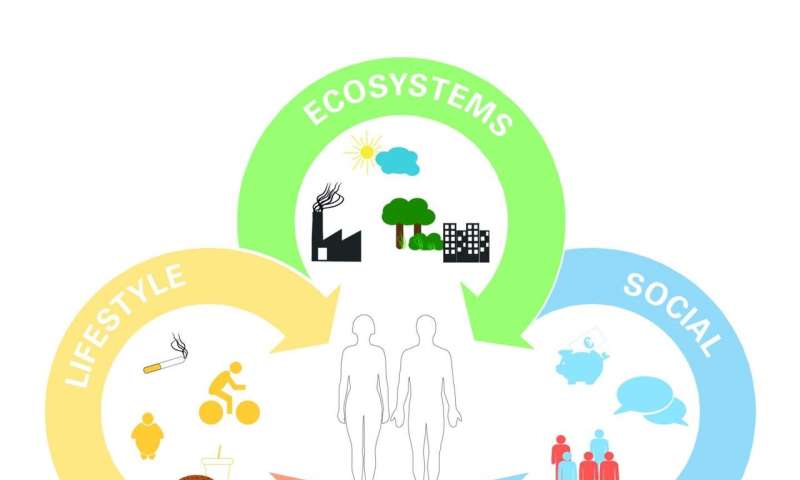
Science has published in its January issue two papers by Associate Prof. Emma Schymanski, Head of the Environmental Cheminformatics research group at the University of Luxembourg. This is a glowing acknowledgement of the relevance of the research focus of her team: developing methods to identify unknown chemicals and their effects on health and disease.
In the two contributions to Science, Prof. Schymanski and her co-authors present the exposome, a recent concept aiming to capture the diversity of environmental factors that can affect us. They also summarise new technological advances and analytical tools used to identify chemicals and understand their impact.
The sum of all environmental factors
The exposome is the sum of all the environmental drivers of health and diseases: a combination of external factors such as chemicals contained in the air, water or food, and of internal components produced by our organism in response to various stress factors. This very complex set of elements is continually evolving, and to map it fully is a challenging undertaking. A first paper describes recent progress that will help with this task, such as the development of high-resolution mass spectrometry, a technology that can detect tens of thousands of compounds in biological and environmental samples. Associated with growing databases on all known chemicals and powerful computational tools to analyse large amounts of data, these recent technological advances could revolutionise environmental monitoring.

A complex network of chemicals
This first paper also highlights that a network approach is needed to take into account the large number of chemical exposures in our daily lives and the complex way they interact with our cells. This is why the second review describes ways to characterise groups of chemicals in diverse samples, from water and soil to biological tissues, and to identify mixtures that pose a combined risk. “Innovative sampling techniques such as hand wipes or silicon bracelets can be used to measure personal exposure,” Prof. Schymanski explains. “We also mentioned the importance of non-targeted analyses to identify unknown contaminants and showed the potential of in-vitro bioassays to assess the toxicity of complex mixtures, even if chemical identities remain unknown.”
“Both papers are a call for a research effort at a scale comparable to what was done for the human genome, to get in-depth knowledge of the cocktail of substances we are exposed to and their intricate interactions with living organisms,” Prof. Schymanski points out.
There are still many challenges ahead: databases have to be harmonised and made fully accessible, statistical tools need refining in order to account for the constellation of chemicals coming from related sources, and methodologies should be standardised. But despite the difficulties, the perspectives are tremendous.
Need for research on environmental quality and health
According to the European environment—state and outlook 2020, we face environmental challenges of unprecedented scale. The number of new chemicals has risen from 20 to 156 million from 2002 and 2019. Pesticides, industrial chemicals and pharmaceuticals can enter the environment and the food chain, possibly causing unwanted effects and disease. Medical research estimates that every year nine million deaths are related to pollution. This highlights the need for research to address the chemical complexity of our world and elucidate the multiple links between environmental quality and health.
Just like large scale genomic studies allowed the detection of many genetic variations linked to diseases, the implementation of exposome-wide association studies with hundreds of thousands of participants would help identify the strongest chemical risk factors and understand their impact on individual health. It will enable the establishment of environmental risk scores, which could be used to develop individual prevention and treatment strategies.
Source: Read Full Article